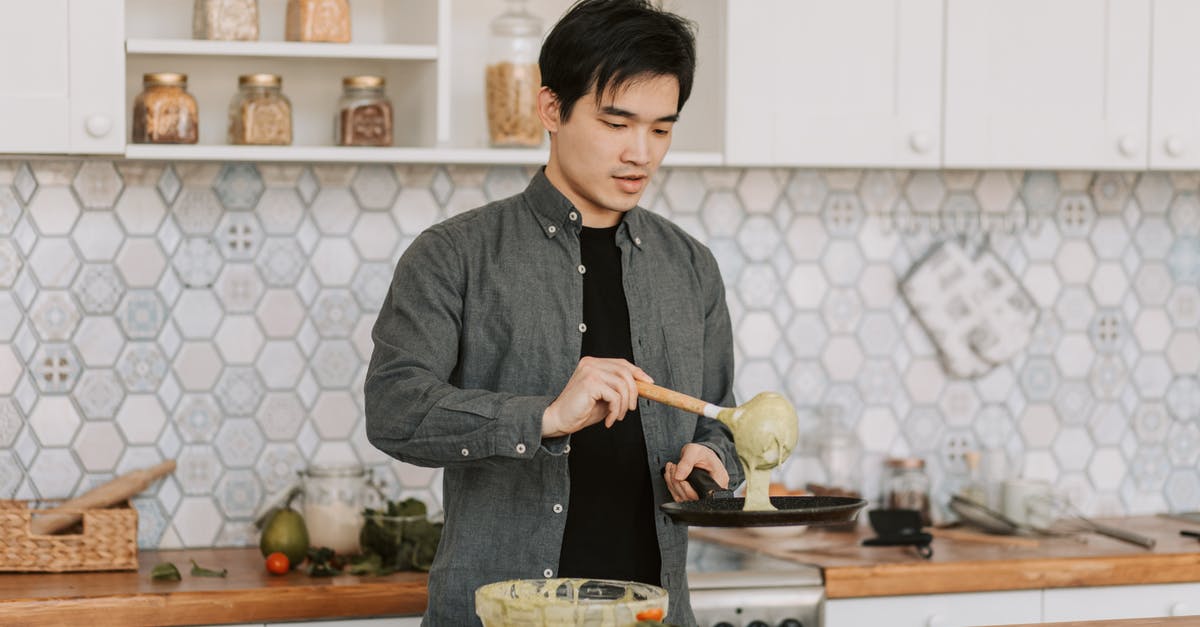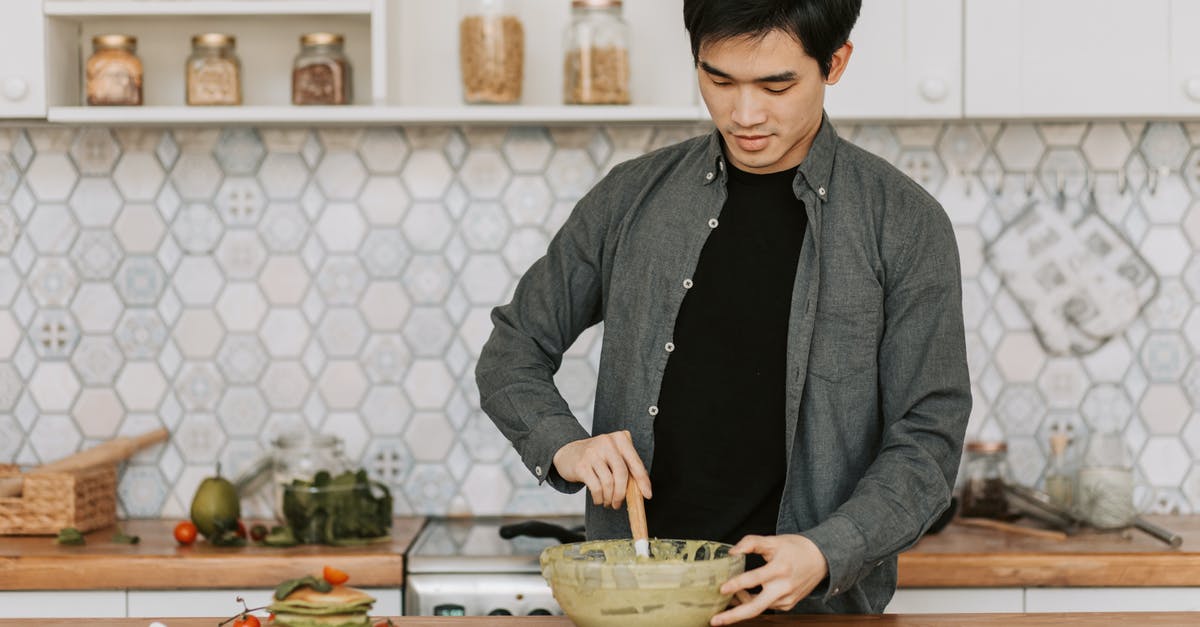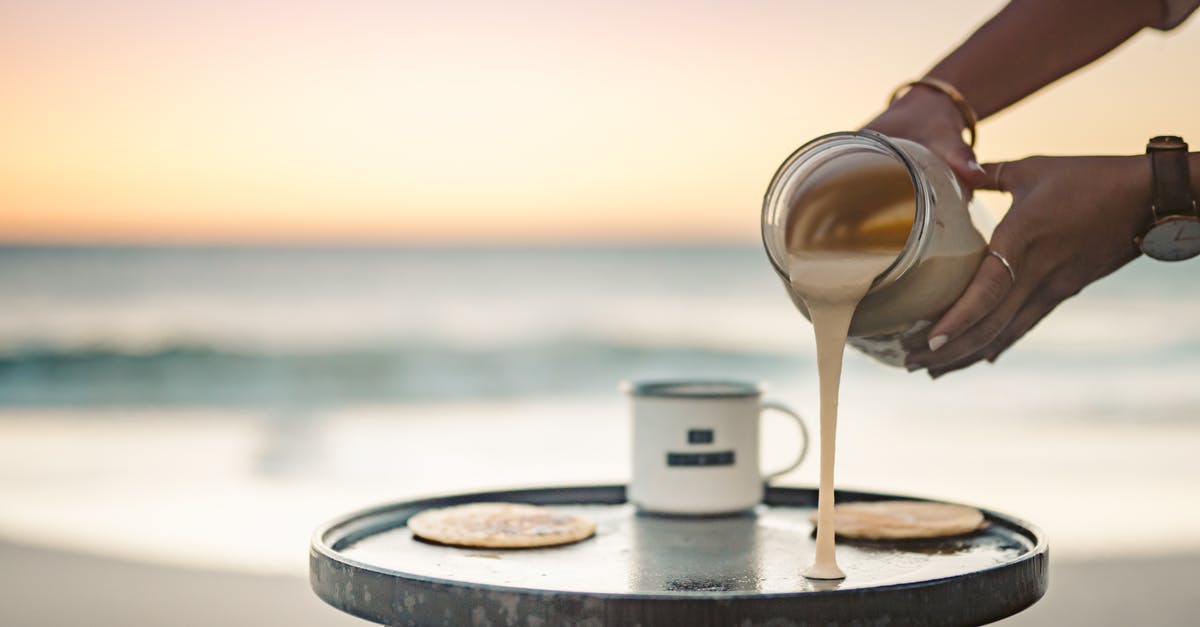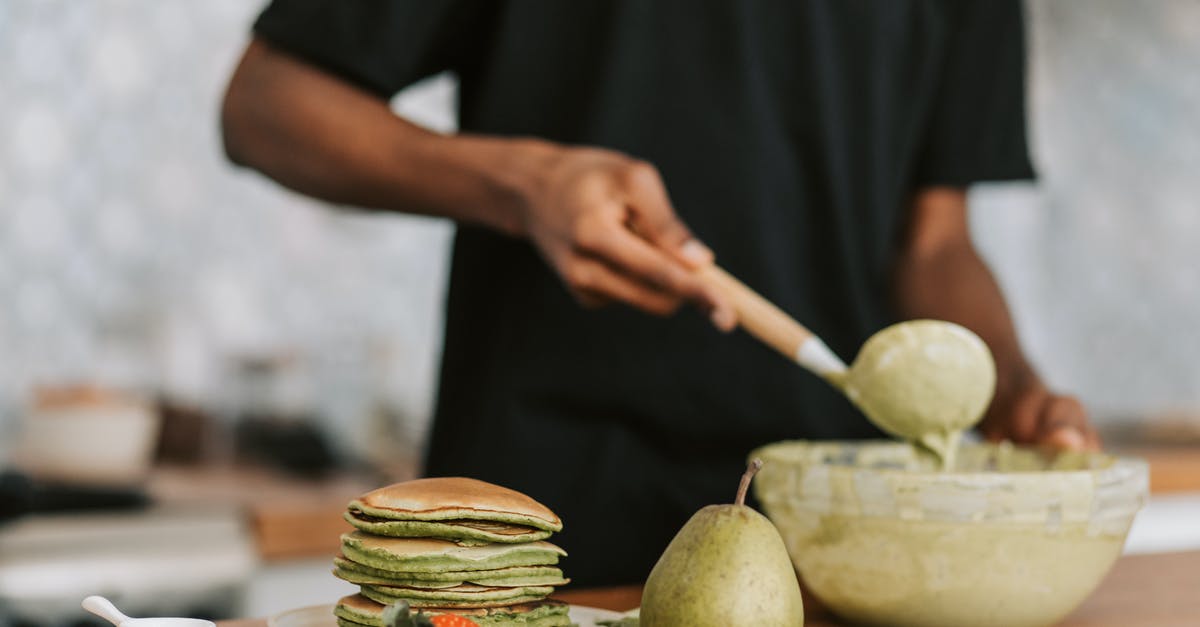Lumps in pancake batter

It seems pretty well understood that you shouldn't stir pancake batter until there are no lumps, cause that will create a tough batter. I'm curious as to what "lumps" exactly are. Are they unincorporated dough lumps? That's the only idea that comes to mind, but seems like it would have some negative result on the final batter.
Best Answer
Bob1's answer has some of the basics -- "lumps" are mostly caused by bits of starch that don't dissolve completely in the liquid to blend with the rest of the batter.
But the potential "downsides" depend on the size of the lumps. It is true that if they are excessively large, you can end up with loose dry flour in your pancakes, which is unpleasant. But I usually have only found that to happen when I haven't sufficiently mixed in flour on the bottom of a mixing bowl or something. Unless you have an exceptionally thick batter or haven't mixed up large "streaks" of flour in the batter, it's more rare to find a large free lump of dry flour floating in the middle of the batter that is big enough not to be "dissolved" during cooking.
Small lumps will usually be broken up in the cooking process as air from the leavening rises and causes circulation in the batter. The warmer temperatures during cooking will also allow liquid to penetrate dry flour bits more readily. (Note that most small lumps in batter that sits for any length of time won't even have dry flour at all: they'll just be "goopy" bits of dough where some moisture has penetrated, kind of like "lumps" in gravy, which won't be very noticeable in the final cooked pancakes.)
Just a note about why many sources recommend "lumpy" batter: it has to do with gluten. If you beat your batter for a long time, more gluten chains will form. This is great if you're trying to build up strength in a batter to make bread or something, but undesirable if you want a tender cake or pancake. Hence, many sources will tell you to mix pancake batter only until dry flour and other dry ingredients are incorporated (i.e., no longer with dry streaks), but small lumps are still acceptable. If you beat the batter long enough to get rid of ALL lumps, you may be toughening the batter too much, so your pancakes will be rubbery, flat, and less tender, rather than high-rising, light, and fluffy. You will also likely be causing some of the bubbles produced by the initial burst of gas from the leavening to burst and leave the batter, which will leave the pancakes more flat and dense.
So, yes, you want to mix enough that you don't actually have huge lumps containing dry flour, but any other negative impact of small lumps is unnoticeable in the final product. On the other hand, overmixing will generally result in dense, rubbery pancakes, probably not a desirable result.
If you're truly worried about the lumps, I can recommend a couple suggestions to mitigate them:
- Mix with a whisk or similar utensil rather than a spoon. You want a utensil that will break up bits of flour most effectively, so something with multiple strands that cuts through the dry ingredients will facilitate that.
- Use lower-gluten flour, like cake flour or pastry flour. Often cake flour is milled more finely, making it easier to dissolve small lumps in liquid. Less gluten makes it less likely for lumps to stick together. In addition, your final pancakes will be guaranteed to be more tender.
- Let pancake batter rest. Many recipes recommend a rest of around 15-20 minutes at room temperature, or up to an hour (or more) in the refrigerator. This will allow time for the flour to dissolve more completely and allow most of the lumps to dissipate or at least soften before you cook the batter. (The fridge is recommended for longer rests, as eventually gases from the leavening will start to bubble out, and the fridge will slow this process.) A rest usually also results in more tender pancakes with a smoother texture, though be careful to add enough liquid as rested batter will generally thicken a bit.
Pictures about "Lumps in pancake batter"



Quick Answer about "Lumps in pancake batter"
Lumps are actually okay! Stir your batter until the dry and wet ingredients are just incorporated. That means mixing until the flour streaks have disappeared, but leaving the pesky lumps. If you over-mix, the gluten will develop from the flour in your batter, making your pancakes chewy instead of fluffy.Is lumpy batter OK?
Over mixing will cause the gluten in the flour to develop, resulting in a chewy and dense pancake instead of a light and tender one. Mix the batter only until all visible streaks of dry ingredients are gone, but some lumps remain. Lumps in your batter won't do any harm!How do you break up lumps in batter?
If you still have a few small lumps you should be able to disperse them with a small wire hand whisk (sometimes called a vinaigrette whisk) or you can use a small spatula or wooden spoon to break them up by pressing them against the side of the pan.More answers regarding lumps in pancake batter
Answer 2
They are flour lumps or potentially lumps of raising agent (if it was lumpy when it went in).
This happens because the starch component of flour expands rapidly on contact with water and becomes a sort of impenetrable layer that is difficult for further water to get through in the short period of time that is normally used when making a batter.
There are no negative consequences in terms of nutrition or food safety of having lumps in batter. The main downside is that some of your bites of the cooked pancake will have loose flour in it, which is not generally very pleasant to eat. These might also cook to be a hard lump, depending on the cooking method and duration of exposure to heat.
Sources: Stack Exchange - This article follows the attribution requirements of Stack Exchange and is licensed under CC BY-SA 3.0.
Images: Vlada Karpovich, Vlada Karpovich, Taryn Elliott, Vlada Karpovich
